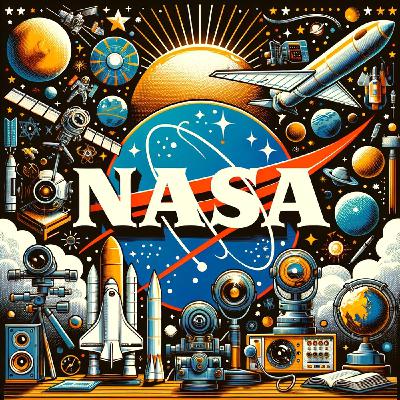Space Science at a Crossroads: NASA Faces Uncertain Future Amid Budget Cuts, New Artemis Missions Prepare to Lift Off
Update: 2025-09-01
Description
The headline making waves this week in space: NASA faces an uncertain crossroads as the White House budget proposal threatens to eliminate 41 ongoing missions—nearly half the agency’s science program—while the highly anticipated Artemis II Moon mission and a new class of astronauts prepare to debut this September. According to The Planetary Society, the proposed 47% cut would halt spacecraft that are still returning groundbreaking data and force layoffs for up to a third of NASA’s workforce, setting American space science back by decades and wasting billions in investment.
But Congress isn’t sitting quietly. Lawmakers on both sides are signaling support to partially restore NASA’s funding, potentially softening the blow if legislation passes in time. Meanwhile, NASA management is taking steps to prepare for the worst, warning teams to make plans for potential shutdowns and reassignments. Behind the scenes, policy updates are underway: NASA recently notified unions of changes to their Reduction in Force policy, which determines how layoffs will proceed and what rights workers will retain if the budget cuts go through. Keith Pearce of NASA’s Goddard Center cautioned staff, “Federal employees cannot strike. They cannot engage in the same activity as private sector employees—this is a vulnerable moment.”
Despite the turmoil, there’s hope and excitement on the horizon. On September 22, NASA will introduce its newest astronaut class—culled from over 8,000 applicants—at a live ceremony available on NASA+, YouTube, and more. These new candidates will start nearly two years of rigorous training, preparing to launch not just to the International Space Station but onward to the Moon and—eventually—Mars. The following day, NASA will preview Artemis II, slated for no later than April 2026. This ten-day lunar mission will send a diverse crew, including astronauts Reid Wiseman, Victor Glover, Christina Koch, and Canadian Jeremy Hansen, around the Moon for the first time in decades.
For American citizens, the budget fight threatens to slow innovation and curtail STEM opportunities, while businesses and state agencies dependent on NASA contracts worry about economic aftershocks. The cuts would ripple out to international partners too, undermining trust and collaboration on planetary research. Yet, there’s still time for public action: The Planetary Society urges supporters to contact their representatives and advocate for continued space exploration funding. As NASA leadership and Congress negotiate next steps, all eyes are on the agency’s September events and upcoming budget hearings.
Listeners can learn more about NASA’s astronaut class reveal and Artemis II by tuning in to the live streams on NASA platforms. Follow your elected officials online and let them know space science matters. Stay engaged for updates on NASA funding, missions, and workforce impacts in the weeks ahead.
Thanks for tuning in. Don’t forget to subscribe for all the latest in space and science. This has been a Quiet Please production—for more, check out quietplease.ai.
For more http://www.quietplease.ai
Get the best deals https://amzn.to/3ODvOta
This content was created in partnership and with the help of Artificial Intelligence AI
But Congress isn’t sitting quietly. Lawmakers on both sides are signaling support to partially restore NASA’s funding, potentially softening the blow if legislation passes in time. Meanwhile, NASA management is taking steps to prepare for the worst, warning teams to make plans for potential shutdowns and reassignments. Behind the scenes, policy updates are underway: NASA recently notified unions of changes to their Reduction in Force policy, which determines how layoffs will proceed and what rights workers will retain if the budget cuts go through. Keith Pearce of NASA’s Goddard Center cautioned staff, “Federal employees cannot strike. They cannot engage in the same activity as private sector employees—this is a vulnerable moment.”
Despite the turmoil, there’s hope and excitement on the horizon. On September 22, NASA will introduce its newest astronaut class—culled from over 8,000 applicants—at a live ceremony available on NASA+, YouTube, and more. These new candidates will start nearly two years of rigorous training, preparing to launch not just to the International Space Station but onward to the Moon and—eventually—Mars. The following day, NASA will preview Artemis II, slated for no later than April 2026. This ten-day lunar mission will send a diverse crew, including astronauts Reid Wiseman, Victor Glover, Christina Koch, and Canadian Jeremy Hansen, around the Moon for the first time in decades.
For American citizens, the budget fight threatens to slow innovation and curtail STEM opportunities, while businesses and state agencies dependent on NASA contracts worry about economic aftershocks. The cuts would ripple out to international partners too, undermining trust and collaboration on planetary research. Yet, there’s still time for public action: The Planetary Society urges supporters to contact their representatives and advocate for continued space exploration funding. As NASA leadership and Congress negotiate next steps, all eyes are on the agency’s September events and upcoming budget hearings.
Listeners can learn more about NASA’s astronaut class reveal and Artemis II by tuning in to the live streams on NASA platforms. Follow your elected officials online and let them know space science matters. Stay engaged for updates on NASA funding, missions, and workforce impacts in the weeks ahead.
Thanks for tuning in. Don’t forget to subscribe for all the latest in space and science. This has been a Quiet Please production—for more, check out quietplease.ai.
For more http://www.quietplease.ai
Get the best deals https://amzn.to/3ODvOta
This content was created in partnership and with the help of Artificial Intelligence AI
Comments
In Channel





